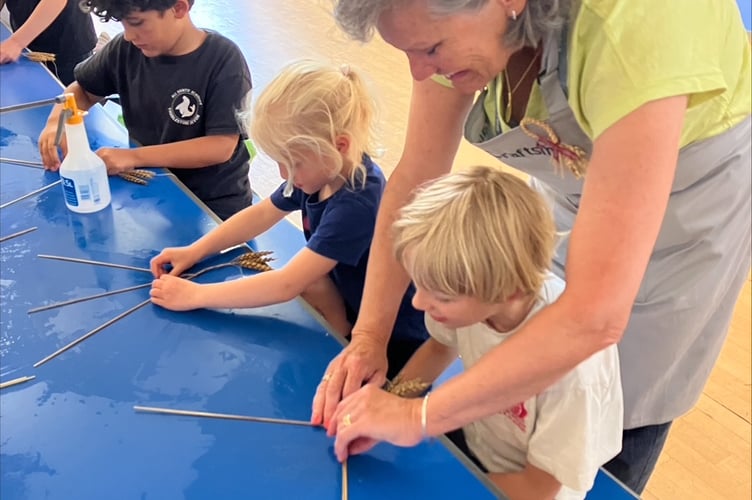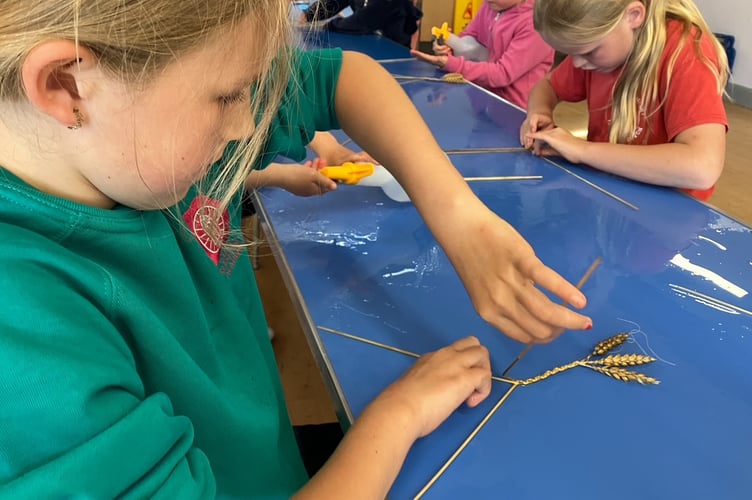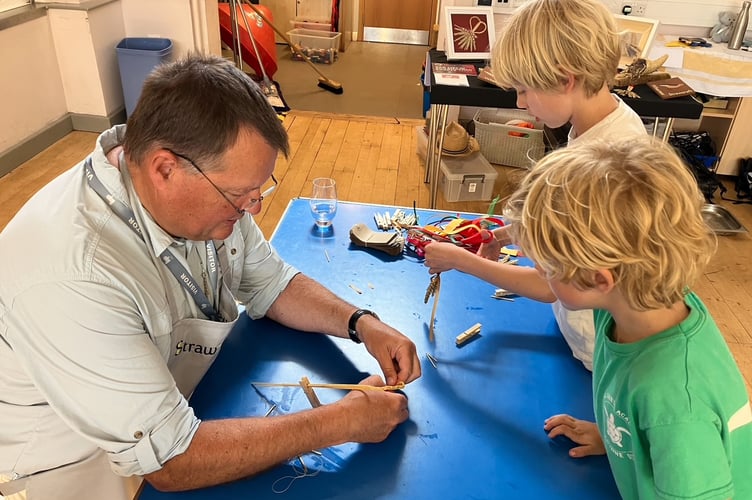Straw may seem an unlikely material to capture the imagination of children, but for Ian and Emma Speechley, it has been the foundation of a lifelong craft they are determined to keep alive. The couple recently visited All Saint’s Thurlestone CofE Academy to run a workshop with pupils from the school’s eco-club, introducing them to the traditional art of straw plaiting.
Ian, who is chairman of the Straw Craftsmen’s Guild, first learnt the skill while at primary school in York. “We started with paper straws, then moved on to natural straw, and it grew from there,” he said. “There’s a lovely symmetry in now going back into primary schools to pass it on.”
Over the decades, Ian and Emma have refined their skills through national groups, workshops and museum demonstrations. Today, they are keen advocates of strawcraft’s heritage value, noting that it is officially red-listed by Heritage Crafts as an endangered practice. “It’s about keeping the craft alive and spreading the word,” Ian explained. “The more children and adults we can introduce to it, the more chance it has of surviving.”

At Thurlestone, the pupils were taught to make ‘countryman’s favours’ – simple plaits traditionally woven by farm workers during their breaks. These small tokens were often given to sweethearts or family members as a gesture of affection. “The children loved the idea of making something for their granny or their parents,” said Emma. “It’s a wonderful way to connect them to a piece of rural history.”

For the eco-club, the session tied neatly into their environmental ethos. “It’s sustainable and eco-friendly,” Ian said. “You only need a few stems of heritage wheat to create something beautiful. Unlike modern varieties, which are short to withstand storms, the wheat we use grows up to six feet high, making it ideal for plaiting and for thatching.”
The couple source their straw from specialist growers, often the same farms that supply thatchers in Devon and beyond. Ian explained. “It’s a material that links us to farming, to architecture, and to craft traditions that stretch back thousands of years.”
Strawcraft is not unique to Britain. From Japanese rice-straw weaving to maize plaiting in the United States and wheat traditions in Eastern Europe and Ukraine, it is a global practice that has evolved wherever cereals have been cultivated. “That worldwide connection and deep history is part of the appeal,” said Ian.

Closer to home, the couple have been running workshops across the region. Some are structured three-hour sessions teaching more complex designs, while others, such as their forthcoming appearance at the Apple Pie Fair in Marldon, are simple ‘have-a-go’ drop-ins where people can make small favours to wear. “Once people try it, they often find it very therapeutic,” Emma said. “It’s a bit like colouring in you concentrate so much on the plaiting order that everything else falls away.”
With crafts such as crochet and knitting enjoying a resurgence, the Speechleys hope strawcraft will follow the same path. “There’s definitely an appetite for going back to traditional skills,” Ian reflected. “They’re natural, sustainable and mindful and they give people a real sense of connection.”
For the children of Thurlestone, it was not only an enjoyable hands-on activity but also an insight into a heritage craft at risk of fading away.





Comments
This article has no comments yet. Be the first to leave a comment.